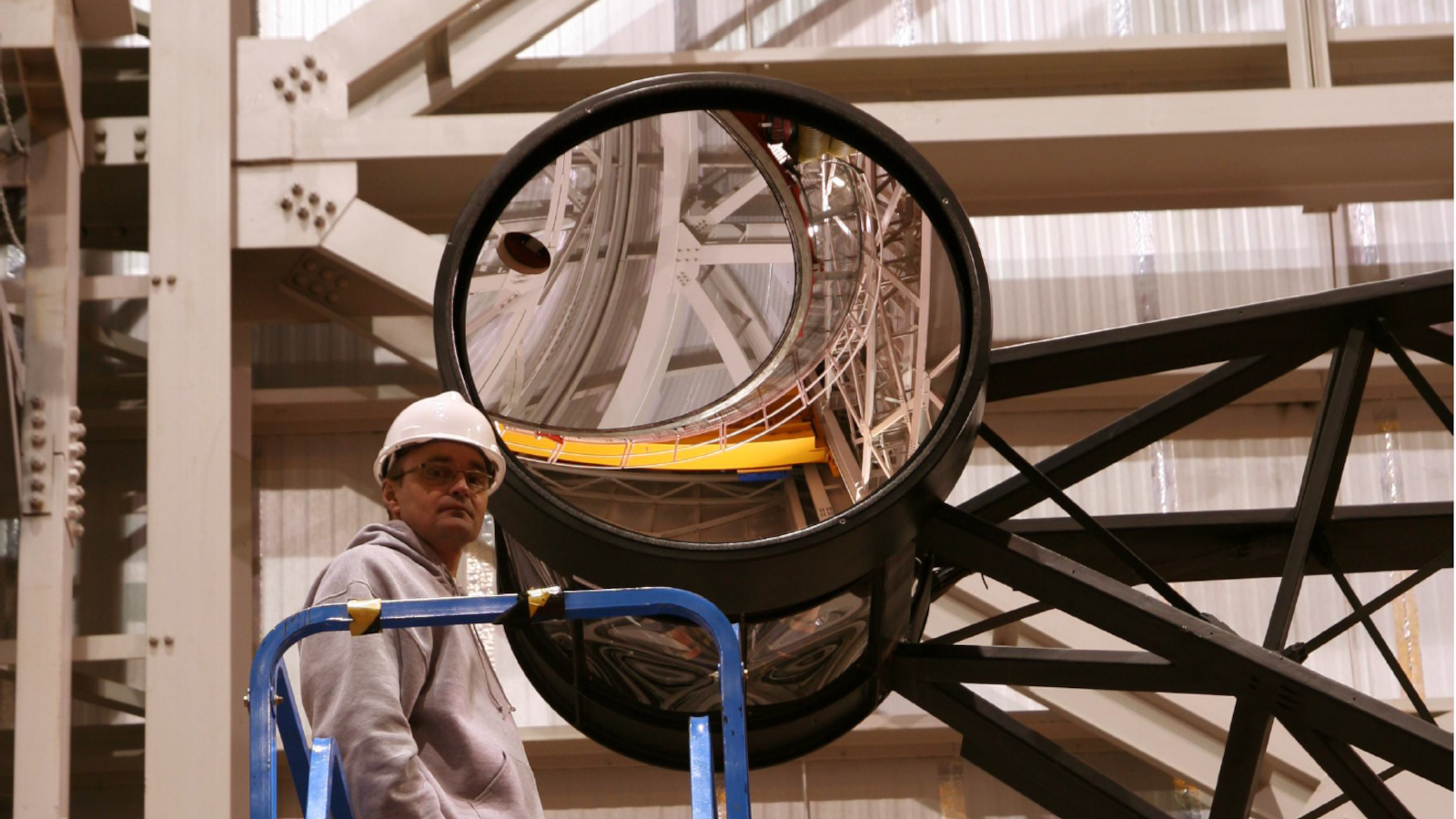LBT f/15 Rigid Secondary Mirror
The LBT f/15 gregorian focal stations where designed to be fed by the two thin-shell adaptive secondary (AdSec) mirrors, but delivery of this cutting-edge technology was late. To enable the LBT to proceed with the commissioning and early science operation of the LUCI1 and MODS1 facility spectrographs, OSU was tasks with designing, building, and delivering a conventional f/15 rigid secondary mirror. The system was delivered to the LBT in April 2008 and was in operation first on the SX (left) side primary mirror, then moved to the DX (right) side primary after delivery of the SX AdSec. After delivery and commissioning of the DX AdSec unit, the rigid secondary was held in reserve to be used when either AdSec was offline for repair so that the LBT could continue binocular science operations.
The borosilicate honeycomb mirror blank for the 0.9m secondary mirror was fabricated by HexTech in Tucson, figured by Thales/SESO in France, and coated by EMF Corp in Ithaca. OSU designed the support system and led the overall project from procurement to commissioning. The hexapod used to position the mirror was designed and built by ADS International in Italy.
Instrument Specification
- Project type: Telescope subsystem - secondary mirror
- Diameter: 0.9m
- Mirror Type: concave gregorian secondary, f/15
- Substrate: borosilicate honeycomb
- Coating: Aluminum with a protective silicon oxide overcoat
- Telescope: Large Binocular Telescope, AZ, USA
- Years active: 2008- present
Instrument Facts
- The rigid secondary was used to commission MODS1, LUCI1 and the PEPSI spectropolarimetric mode.
- After 15 years of operation, the EMF protected aluminum coating shows no evidence of reflectivity degradation
- The slightly larger diameter of the rigid secondary mirror cowling provides better straylight rejection at the LBT direct Gregorian foci than the adaptive secondaries.
- An odd scattered light feature in the rigid secondary (origin unknown) produces an image artifact with V-shaped lobes on one side of a bright star that is informally known as the "evil space bunnies"
Instrument Team
Tom O'Brien (Project Lead)
John Hill (LBT project lead)
Ross Zhelem (Optical Designer)
Mark Derwent (Mechanical Engineer)
Jerry Mason (Software Systems Developers/Engineer)
Daniel Pappalardo (Electrical Engineer)
Dave Brewer (Senior Instrument Maker)
Dave Steinbrecher (Senior Instrument Maker)


